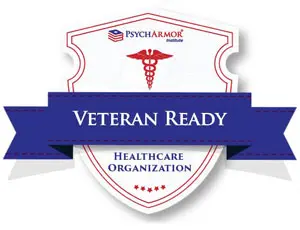What is Inpatient Residential?

We are striving towards a life without mood or mind-altering substances, but with each day comes new challenges. Unable to cope, we resort to our most familiar mechanisms, no matter how harmful they are. Chemical dependency becomes obvious. The familiar flu-like symptoms, uncontrollable shakes, and the inability to focus on anything but that next one. We hope to get well enough to accomplish life’s responsibilities. These withdrawal symptoms can be serious depending on the substances, and medical stabilization is the best course of action to reclaim control. Commonly referred to as “detox”, it is an important precursor to residential treatment.
Medical stabilization through a detoxification process is accomplished when a patient is under 24 hour medical supervision. Registered nurses evaluate patients and take vitals every two hours, and Addiction Physicians assess cases daily. A full time medical team, consisting of staff physicians, nurses, nurse practitioners, and psychiatrists work collaboratively to best treat the patient as an individual based on medical need. The duration of stabilization varies from patient to patient, and the primary focus is patient safety.
Upon completion of stabilization, patients “step down” to inpatient residential. Clinically, individual therapy and group sessions are within the same facility staffed by medical and clinical professionals around the clock. Primary programming occurs throughout the day within the facility and revolves around a rigid schedule. Some facilities offer age and gender specific programming.
Residential is composed of on-location Medical services, Psychiatric services, Clinical groups, and health and wellness activities. Co-occurring specialty groups are available to patients and assigned by primary therapists based on need. Clinical assignments given to patients are expected to be completed during their free time. Outside contact is limited and modern technology (cell phones, video games etc.) are practically obsolete. Sounds strict, right? Remember, this is time for a person to focus on themselves, find out what makes them tick, and to get their lives back in order.
While a patient is actively working on himself or herself in a safe environment, staff is exploring aftercare options; does the patient have a safe place to live? Are they open to a 12-step fellowship? Will they be going back to their job? What are their medical and clinical needs upon discharge? Are they open to suggestions? Therapists and Care Managers (or care coordinators/social workers) work tirelessly with people like myself to ensure quality aftercare. Based on patient discretion, family becomes involved. Most residential facilities offer family visitation, and some even offer an in depth family program (see Seabrook’s Family Matrix program). Upon completion of a residential stay, ideally 28 days, the patient is discharged into the next level of care. There are best practices associated with this transition, and will be discussed in another blog.
When making a decision to have a loved one admitted into an addiction rehab treatment facility, it’s essential to make sure the program is properly licensed and accredited. Seabrook believes its patients deserve a treatment rehab center with integrity, backed by accreditation organizations worthy of the utmost respect. That is why we have sought and earned accreditation by the Commission on Accreditation of Rehabilitation Facilities (CARF). Our CARF accreditation, licenses and qualifications are a direct result of the quality we employ in every aspect of our New Jersey and Pennsylvania addiction treatment program. Our staff, programs, and treatment methods have been put in place to provide the highest level of individualized care to each client. To learn more about how we can help you, your client, or someone you love, please contact our admissions team directly at 800 761 7575; 1515.



